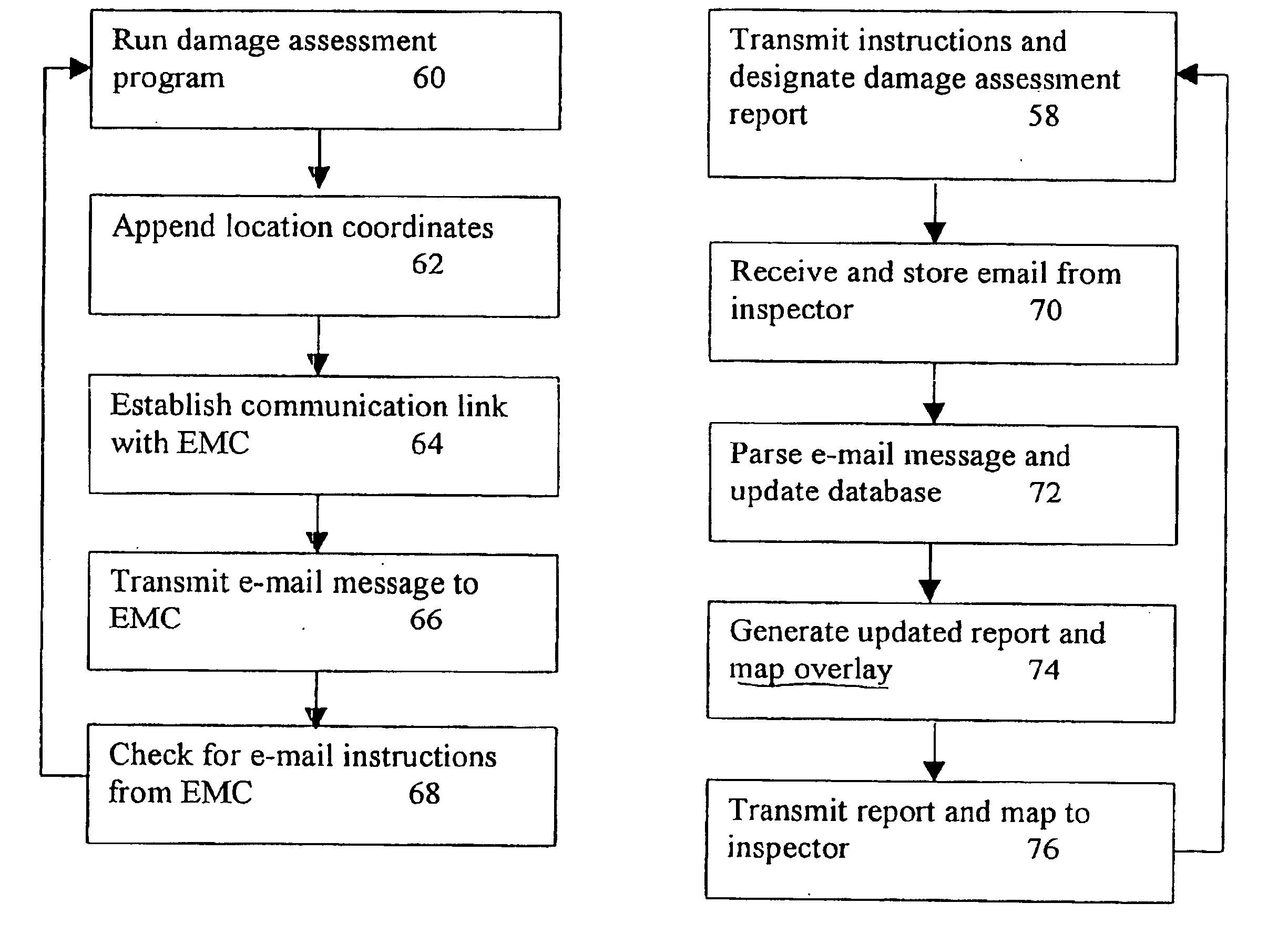Emergency management system
a management system and emergency technology, applied in the field of emergency management system, can solve the problems of difficult to determine the best way to allocate outside resources, insufficient local resources such as police, fire protection and heath care, and affecting a large number of people, so as to minimize further injury or damage, improve communication between decision makers, and track and manage progress.
- Summary
- Abstract
- Description
- Claims
- Application Information
AI Technical Summary
Benefits of technology
Problems solved by technology
Method used
Image
Examples
Embodiment Construction
The present invention relates to an emergency management system and method. More particularly, the present invention relates to an improved system for an efficient system and method for obtaining and assessing real-time damage and data regarding life-threatening situations from widely dispersed geographical areas. In the following description of the preferred embodiment, reference is made to the accompanying drawings that form a part hereof, and in which is shown by way of illustration a specific embodiment in which the invention may be practiced. It is to be understood that other embodiments may be utilized and that changes may be made without departing from the scope of the present invention. For purposes of illustration, the following description describes the present invention as used with particular field devices in conjunction with web-server computers and web-browser computers coupled to the Internet. However, it is contemplated that the present invention can also be used as ...
PUM
 Login to View More
Login to View More Abstract
Description
Claims
Application Information
 Login to View More
Login to View More - R&D
- Intellectual Property
- Life Sciences
- Materials
- Tech Scout
- Unparalleled Data Quality
- Higher Quality Content
- 60% Fewer Hallucinations
Browse by: Latest US Patents, China's latest patents, Technical Efficacy Thesaurus, Application Domain, Technology Topic, Popular Technical Reports.
© 2025 PatSnap. All rights reserved.Legal|Privacy policy|Modern Slavery Act Transparency Statement|Sitemap|About US| Contact US: help@patsnap.com



